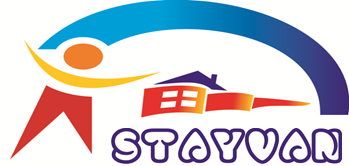The HAL-mark of Indian Defence 🪖
Bollywood has made us fall patriotically in love with the Indian Armed Forces…
Little did we know that the Indian defence sector would also be romanticised in the stock market, with major defence stocks rallying by about a 100% on average in the past year!
Amongst these is the largest defence PSU of India, which is responsible for state-of-the-art aircrafts and helicopters that are now world-renowned – Hindustan Aeronautics!
And even after giving its investors a return of 4x in the past 5 years, there seems to be more runway left for HAL.
What’s Kept HAL Going?
Most of the rallying for HAL, and other defence stocks comes from three factors:
- A growing defence budget – India set aside Rs. 5.94 lakh crore for defence spending, including a capital outlay which is higher by 8% compared to the previous year. The capital allocation is where money is spent on aircrafts, helicopters, missiles, etc.
- Increasing indigenisation – India has reduced its import reliance from 70% of all defence equipment to now less than 50%. India’s defence production hit a high of Rs. 1 lakh crore in FY23, more than double the amount that was recorded in FY19
- Higher exports – India’s defence exports have grown more than 10x in the last 6 years, and are set to hit a Rs. 35,000 mark in FY25 from the current Rs. 16,000 crore (28% 5 year CAGR)
Strong Visibility over the next Decade…
For HAL, the tailwinds have resulted in a strong order book of Rs. 82,000 crore, which is executable over the next 4-5 years. To add some perspective, HAL’s annual revenue in FY23 was almost Rs. 27,000 crore. The order book it is currently sitting on is more than 3x its current annual revenue. Additionally, the management of HAL has cited an additional order pipeline of Rs. 50,000 crore, which is yet to materialise. This order is expected to range across fighter jet engines, Advanced Light Helicopters, Light Utility Helicopters, and fighter aircrafts.
💡 HAL is set for tremendous growth from now till 2040 as India modernizes, expands and replaces its entire fleet with new and indigenously designed and developed platforms
Ramping up on Execution
While orders can keep coming in, if HAL isn’t able to execute orders, all that glam is pointless. There are multiple things done by HAL in order to be able to successfully ensure the conversion of this large order book into revenue growth:
- HAL has turned to outsourcing the production of a substantial part, and will act as the final integrator of all components. This is a common model in aviation (both civil and military) given the volume and complexity of parts
- HAL’s previous order of Tejas Mk1 coming to a close will free up some of its capacity to 16 per annum, from the previous 6-7 per year
- HAL has recently added its third facility in Nasik that will take its jet-manufacturing capacity from 16 planes a year to 24, with the aim to ramp this up to 40
- It has also started a facility in Karnataka in 2022 for its helicopters, taking production from 30 helicopters a year to 60, and aims to take this to 90 in the near future
💡 Manufacturing capacity for HAL is expected to at least triple across aircrafts and helicopters so it can fulfil all the orders over the coming years
Additional Boost from Maintenance
While we’ve been raving about new orders so much, it’s important to note that Manufacturing constitutes to just a quarter of HAL’s revenue, while the rest of the three-quarters is formed up by Maintenance, Repair and Overhaul (MRO).
HAL provides MRO services to 75% of India’s aircrafts and helicopters across the Army and Coast Guard. This is expected to bring in Rs. 18,000-19,000 crore of revenue every year, over the coming years.
What Does All of This Mean in Numbers?
Over the last 5 years, HAL’s revenue has seen a CAGR of 8%. However, with the order book and capacity both going up, revenue CAGR over the next 5 years is set to double to a 16%.
Profitability can go up at a higher rate for HAL given cost efficiencies, a change in the manufacturing model, a change in composition from R&D to manufacturing, and higher operating efficiency. This can result in EBITDA margins going from the current 29% to 32% by FY27.
Does HAL Stock have Valuation Comfort?
In terms of valuations, the stock has traded at an average 1-year forward PE of 10x, with it currently trading at a 16x multiple. Taking all of the above factors into consideration, and the fact that it trades at a PEG of 0.9x, we see there to be a potential for valuations to move to a PEG of >1x; in addition to the steady 20%+ PAT CAGR it has the potential to deliver over the next many years, resulting in a strong long term compounding story.
Conclusion:
The defence sector play is here to stay for the long term, and HAL, with its name and actions screaming patriotism and expertise in making India rise up, might just be the veteran to back in this global war!
Want to explore companies like HAL that dominate their respective sectors or industries? Explore the Monopolies smallcase by Rupeeting

























































